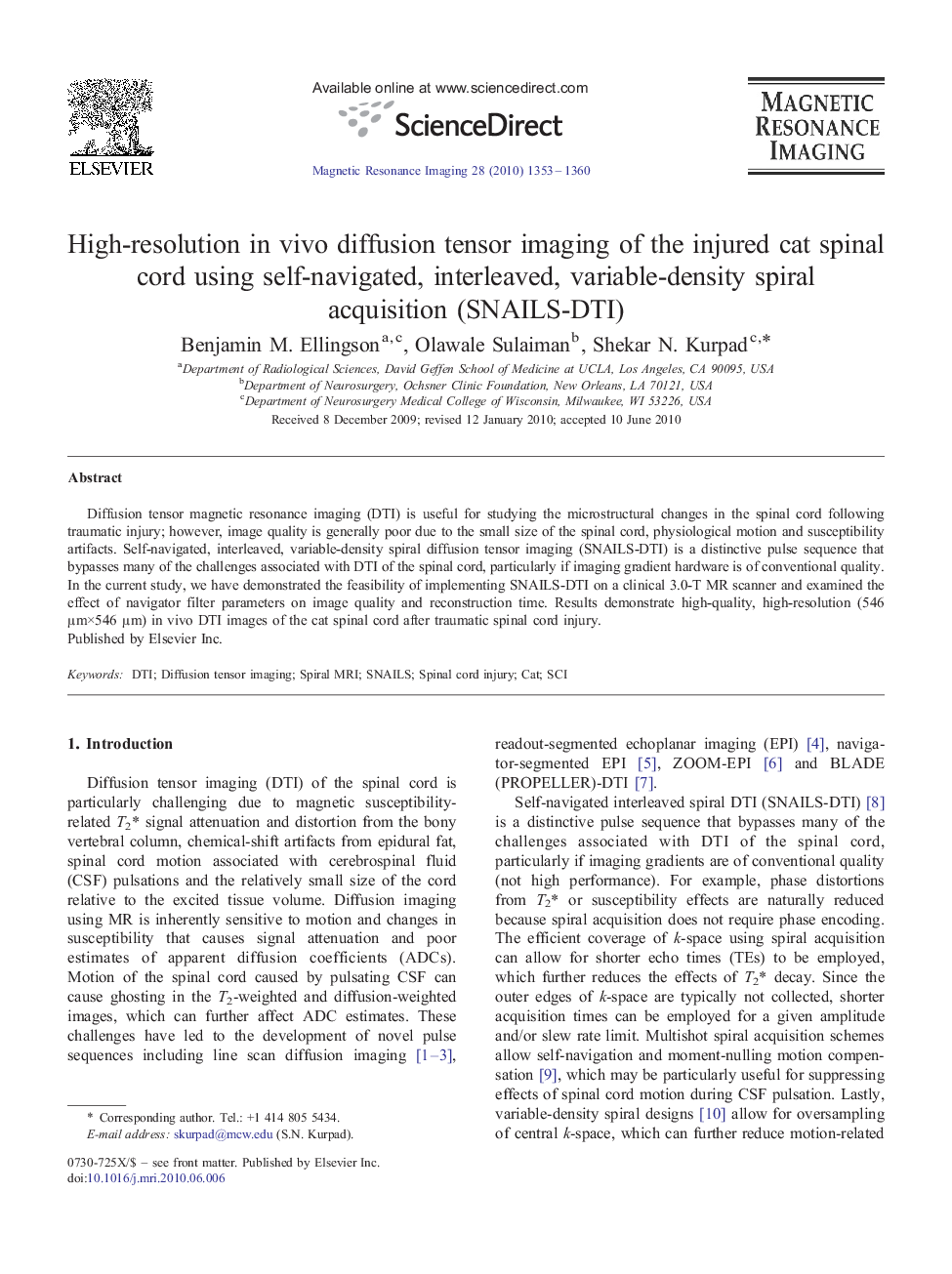| Article ID | Journal | Published Year | Pages | File Type |
|---|---|---|---|---|
| 1807003 | Magnetic Resonance Imaging | 2010 | 8 Pages |
Diffusion tensor magnetic resonance imaging (DTI) is useful for studying the microstructural changes in the spinal cord following traumatic injury; however, image quality is generally poor due to the small size of the spinal cord, physiological motion and susceptibility artifacts. Self-navigated, interleaved, variable-density spiral diffusion tensor imaging (SNAILS-DTI) is a distinctive pulse sequence that bypasses many of the challenges associated with DTI of the spinal cord, particularly if imaging gradient hardware is of conventional quality. In the current study, we have demonstrated the feasibility of implementing SNAILS-DTI on a clinical 3.0-T MR scanner and examined the effect of navigator filter parameters on image quality and reconstruction time. Results demonstrate high-quality, high-resolution (546 μm×546 μm) in vivo DTI images of the cat spinal cord after traumatic spinal cord injury.
